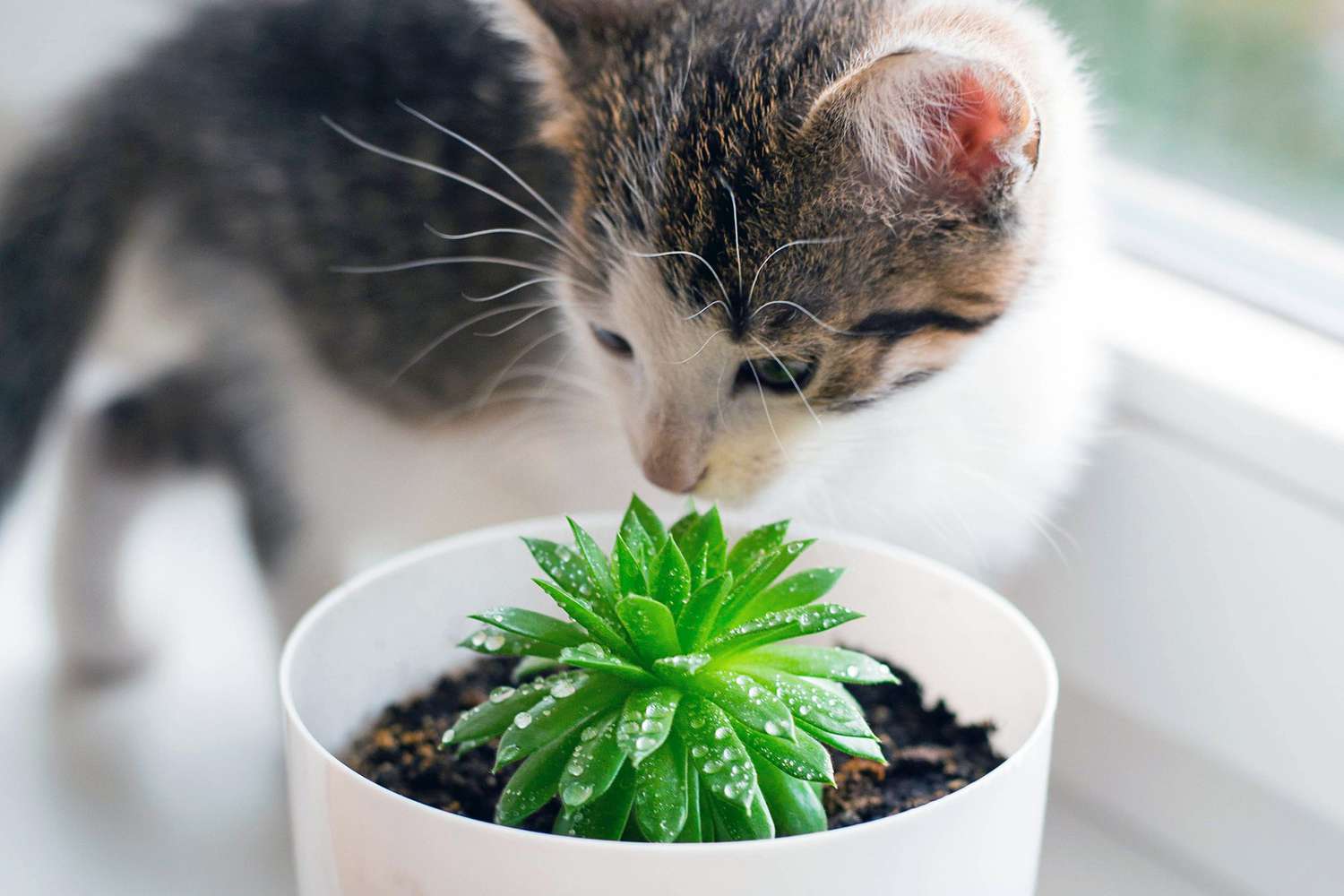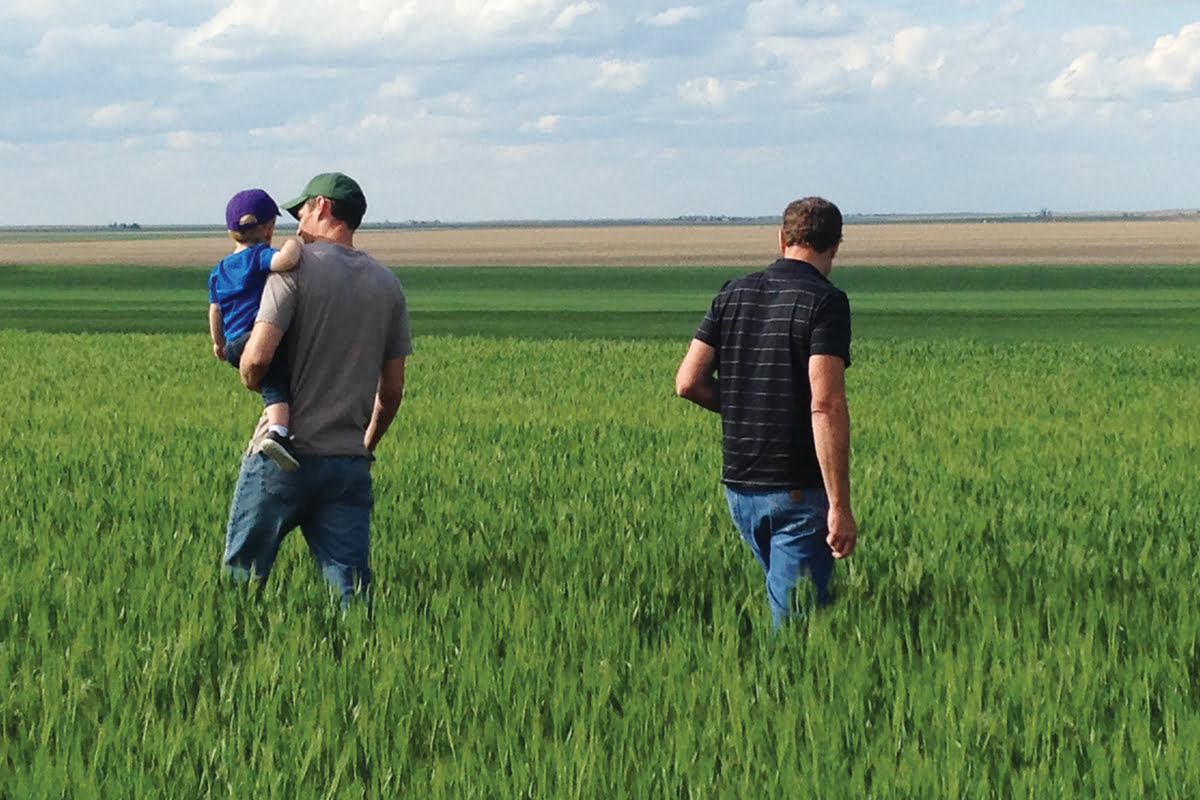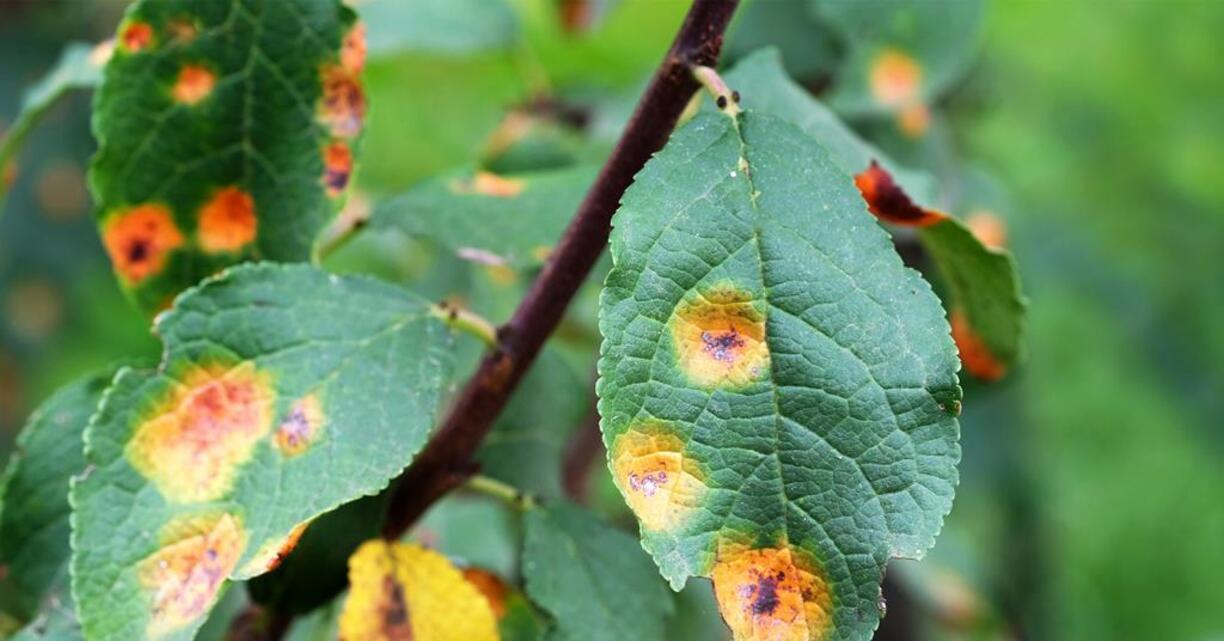Home>Gardening News and Trends>Latest News>Why Are Pesticides Unique Among Toxic Substances Keenan Quizlet


Latest News
Why Are Pesticides Unique Among Toxic Substances Keenan Quizlet
Modified: January 22, 2024
Stay updated with the Latest News on why pesticides are considered unique among toxic substances on Keenan Quizlet. #LatestNews
(Many of the links in this article redirect to a specific reviewed product. Your purchase of these products through affiliate links helps to generate commission for Chicagolandgardening.com, at no extra cost. Learn more)
Table of Contents
Introduction
Pesticides are a unique class of toxic substances that play a significant role in modern agriculture. These chemical compounds are specifically designed to control or eliminate pests that can cause harm to crops, livestock, and even human health. Pesticides are widely used around the world to enhance food production, protect public health, and ensure economic stability in the agricultural sector.
The term “pesticides” encompasses a wide range of chemicals, including insecticides, herbicides, fungicides, and rodenticides. Each type of pesticide is formulated to target specific organisms and disrupt their biological processes. This targeted approach allows farmers and agronomists to mitigate the risks associated with pests and maximize crop yields.
What makes pesticides unique among toxic substances is their selective toxicity. Unlike other toxic chemicals that can harm a broad range of organisms, pesticides are designed to be effective against specific pests while minimizing harm to non-target organisms. This selective toxicity is achieved through careful formulation and precise application methods.
Pesticides work through various modes of action, such as interfering with the pests’ nervous systems, inhibiting their metabolic processes, or disrupting their reproductive abilities. These mechanisms enable pesticides to effectively control pests and reduce the risks of crop damage, disease transmission, and contamination.
Despite their benefits, pesticides also pose environmental and health risks. These chemicals can leach into soil and water systems, potentially contaminating habitats and affecting non-target organisms. Additionally, prolonged exposure to pesticides can have adverse effects on human health, including acute poisoning, chronic illnesses, and even developmental disorders.
To mitigate these risks, regulatory measures and guidelines have been implemented globally. These measures aim to ensure the proper use and handling of pesticides, enforce safety standards, and minimize environmental impact. Moreover, there is a growing emphasis on sustainable pest management practices, promoting integrated pest management (IPM) strategies that combine biological, cultural, and chemical control methods.
In this article, we will explore the different types of pesticides, their modes of action, and the environmental and health impacts associated with their use. We will also delve into the regulatory measures in place, highlighting the importance of striking a balance between effective pest control and sustainable agricultural practices. So, let’s dive in and uncover the unique world of pesticides.
Definition and Types of Pesticides
Pesticides are chemical or biological substances used to control or eliminate pests that threaten plants, animals, and humans. They are designed to disrupt the normal functions of pests, preventing damage to crops and minimizing the spread of diseases. Pesticides can be classified into several types based on their target pests and mode of action.
1. Insecticides: These pesticides are specifically formulated to target insects that can damage crops, transmit diseases, or infest homes and structures. Insecticides can be further categorized into contact insecticides, which kill insects on contact, and systemic insecticides, which are absorbed by plants and kill insects that feed on them.
2. Herbicides: Herbicides are used to control unwanted weeds and plants that compete with crops for nutrients, sunlight, and space. They are classified into two main types: selective herbicides, which target specific types of plants while leaving desirable crops unharmed, and non-selective herbicides, which kill all vegetation they come into contact with.
3. Fungicides: Fungicides are used to prevent and control fungal diseases that can damage crops, trees, and ornamental plants. They work by inhibiting the growth and reproduction of fungi that cause diseases like powdery mildew, rust, and blight.
4. Rodenticides: Rodenticides are used to control rodents such as rats and mice. They come in various forms, including baits, gels, and poisons, and are designed to attract and kill rodents.
5. Nematicides: Nematicides are pesticides specifically designed to control nematodes, which are microscopic worms that can cause significant damage to plant roots, leading to stunted growth and reduced crop yields.
6. Molluscicides: Molluscicides are used to control slugs and snails, which can damage a wide range of crops.
7. Avicides: Avicides are used to deter or eliminate birds that can cause damage to agricultural fields or pose a threat to human health.
These are just some of the many types of pesticides available. Each type has its unique characteristics and is formulated to target specific pests. It is important to use pesticides responsibly, following proper application techniques and adhering to safety guidelines, to ensure effective pest control while minimizing environmental impact. It is also crucial to consider alternative pest management strategies, such as biological control and cultural practices, to reduce reliance on pesticides and promote sustainable agriculture.
Modes of Action of Pesticides
Pesticides work through various modes of action to effectively control pests and mitigate the risks they pose to crops, livestock, and human health. Understanding these modes of action is vital for selecting the appropriate pesticide and ensuring its optimal efficacy. Here are some common modes of action of pesticides:
1. Neurotoxic action: Many pesticides, particularly insecticides, target the nervous systems of pests. They interfere with neurotransmitters, disrupting the transmission of nerve signals and causing paralysis or death. Examples of neurotoxic pesticides include organophosphates and pyrethroids.
2. Inhibition of metabolic processes: Some pesticides inhibit key enzymes involved in metabolic processes essential for the survival of pests. By disrupting these processes, they cause metabolic dysfunction, eventually leading to the death of the target organism. Herbicides like glyphosate and glufosinate-ammonium work by inhibiting specific enzymes involved in plant growth.
3. Reproductive disruption: Certain pesticides are designed to disrupt the reproductive abilities of pests, limiting their population growth. These pesticides may interfere with hormone production, affect egg development, or impair fertility. They are commonly used in insect and rodent control.
4. Systemic action: Systemic pesticides are absorbed by plants and transported throughout their vascular systems. They provide internal protection against pests, as they are ingested or come into contact with the target organism. Systemic insecticides, for example, can be applied to the soil or directly to the foliage. As the plant takes up the pesticide, it becomes toxic to pests that feed on it.
5. Contact action: Contact pesticides work upon direct contact with the pest’s body. They penetrate through the insect’s cuticle or disrupt the integrity of the pest’s exoskeleton, causing dehydration, suffocation, or nerve damage. These pesticides are commonly used in the control of crawling insects, such as cockroaches or ants.
It is essential to consider the mode of action of a pesticide when designing an effective pest management strategy. Understanding how a pesticide affects the target organism helps in selecting the appropriate product, determining the optimal dosage and application method, and preventing the development of pesticide resistance.
Moreover, integrated pest management (IPM) strategies promote the use of multiple modes of action to minimize pesticide reliance and maximize effectiveness. This approach combines cultural, biological, and chemical controls to achieve sustainable pest management. By adopting IPM methods, farmers and agronomists can reduce the environmental impact of pesticides while maintaining successful pest control.
Overall, understanding the modes of action of pesticides is crucial for safe and effective pest management. It allows for informed decision-making, proper application techniques, and the development of sustainable pest control practices.
Environmental Impact of Pesticides
While pesticides play a crucial role in controlling pests and protecting agricultural yields, they can also have significant environmental impacts. These chemicals have the potential to contaminate ecosystems, harm non-target organisms, and degrade natural resources. Here are some of the key environmental impacts associated with the use of pesticides:
1. Water contamination: Pesticides can enter water bodies through runoff, leaching, or direct application. This contamination can have detrimental effects on aquatic organisms, including fish, amphibians, and invertebrates. Pesticides can disrupt the balance of aquatic ecosystems, leading to population declines, reduced biodiversity, and long-term ecological consequences.
2. Soil degradation: Persistent use of pesticides can lead to the degradation of soil health and fertility. Pesticides can harm beneficial soil organisms, such as earthworms and microorganisms, which play a vital role in maintaining soil structure and nutrient cycling. Soil erosion can also increase as pesticides reduce the stability of plant root systems.
3. Harm to non-target organisms: Pesticides, especially broad-spectrum ones, can harm beneficial insects, birds, and other wildlife that play important roles in pollination, pest control, and ecological balance. The decline in populations of these non-target organisms can have cascading effects on the overall ecosystem.
4. Pesticide drift: Pesticide drift occurs when pesticides are carried by wind currents to areas beyond the intended target. This can result in the contamination of nearby farms, residential areas, and natural habitats, leading to unintended exposure and potential harm to humans, animals, and crops.
5. Development of pesticide resistance: Frequent and excessive use of pesticides can lead to the development of pesticide resistance in target pests. This resistance arises from the selective survival and reproduction of individuals with natural genetic variations that render them less susceptible to the pesticide’s effects. As a result, higher pesticide doses or more potent chemicals may become necessary, further escalating the environmental impact.
To minimize the environmental impact of pesticides, several strategies and practices have been developed. Integrated pest management (IPM) approaches promote the use of alternative methods, such as biological controls and cultural practices, to reduce reliance on chemical pesticides. Precision farming techniques and improved application technologies can also help minimize pesticide drift and ensure targeted application.
Regulatory bodies and organizations also play a vital role in assessing the environmental impact of pesticides. They establish guidelines, restrictions, and safety standards for pesticide registration, use, and disposal. These regulations aim to safeguard biodiversity, protect ecosystems, and promote sustainable agricultural practices.
It is incumbent upon farmers, agronomists, and pesticide users to adhere to these guidelines, implement best practices, and exercise responsible stewardship. By reducing pesticide usage, adopting alternative pest management strategies, and promoting sustainable agricultural practices, we can mitigate the environmental impact of pesticides while ensuring the long-term health and sustainability of our ecosystem.
Health Effects of Pesticides
Pesticides, although designed to control pests, can also have significant health effects on humans and animals. Exposure to pesticides can occur through inhalation, skin contact, or ingestion, and can lead to acute or chronic health problems. Here are some of the key health effects associated with pesticide exposure:
1. Acute poisoning: Direct exposure to high levels of pesticides can result in acute poisoning, which can manifest as symptoms such as nausea, vomiting, dizziness, headaches, and even seizures or respiratory distress. These acute health effects can be particularly severe in cases of accidental or intentional pesticide ingestion.
2. Chronic health effects: Prolonged exposure to low levels of pesticides over time can lead to chronic health effects. Some pesticides have been linked to an increased risk of certain types of cancer, such as leukemia, lymphoma, and reproductive system cancers. Long-term exposure can also contribute to respiratory disorders, neurodevelopmental issues, hormonal imbalances, and reproductive problems.
3. Occupational health risks: Farmers, farm workers, and pesticide applicators are at higher risk of pesticide exposure due to their close proximity to these chemicals during handling, mixing, and application. Occupational exposure can lead to a higher incidence of pesticide-related health issues, such as skin irritation, respiratory problems, and long-term chronic conditions.
4. Children’s health: Children are more vulnerable to the harmful effects of pesticides due to their developing bodies and higher exposure rates. Pesticide exposure in early childhood can impair cognitive development, affect neurobehavioral functions, and increase the risk of developmental disorders. Children living in agricultural communities may face increased exposure through proximity to pesticide-treated fields.
5. Pesticide residues in food: Some pesticides can leave residues on crops, which can be ingested when consuming contaminated food. While regulatory limits are established to ensure food safety, long-term exposure to pesticide residues in food remains a concern. Certain groups, such as pregnant women, infants, and young children, may be more susceptible to the potential health impacts of pesticide residues.
To mitigate the health risks associated with pesticides, it is crucial to prioritize safety measures and promote responsible pesticide use. This includes following proper handling and storage procedures, wearing protective clothing during pesticide application, and adhering to safety guidelines and recommended waiting periods before re-entering treated areas.
Furthermore, regulatory bodies monitor and set safety standards for pesticide use in order to protect public health. This includes establishing maximum residue limits for pesticide residues in food and conducting risk assessments to determine the potential health effects of pesticides before they are approved for use.
Education and awareness also play a vital role in minimizing pesticide exposure. By educating farmers, workers, and the general public about the risks associated with pesticides, safe handling practices, and alternatives to chemical pesticides, we can reduce the incidence of pesticide-related health issues and promote healthier environments for all.
Regulatory Measures and Guidelines
Given the potential risks associated with pesticide use, regulatory measures and guidelines have been established at national and international levels to ensure the safe and responsible handling, application, and disposal of these chemicals. These regulatory frameworks aim to protect human health, safeguard the environment, and promote sustainable agricultural practices. Here are some key aspects of pesticide regulations:
1. Pesticide registration: Before a pesticide can be sold and used, it must undergo a rigorous registration process. Regulatory agencies review scientific data on the pesticide’s efficacy, toxicity, and environmental impact to determine if it meets safety standards. This ensures that only approved pesticides that meet specified criteria are available on the market.
2. Maximum residue limits (MRLs): Regulatory agencies set MRLs, which are the maximum allowable levels of pesticide residues in food and feed. These limits are established based on extensive scientific assessments to ensure that pesticide residues in agricultural commodities do not pose a risk to human health. Regular monitoring and enforcement are conducted to ensure compliance with these limits.
3. Restricted use pesticides: Certain pesticides are designated as “restricted use,” indicating that their application requires specialized training, certification, or licensing beyond the general pesticide applicator requirements. These measures aim to ensure that only qualified and trained individuals handle and apply these potentially hazardous chemicals.
4. Safety guidelines: Regulatory agencies provide safety guidelines for the use of pesticides to minimize health and environmental risks. These guidelines include instructions on pesticide handling, protective clothing, proper application techniques, equipment calibration, and safety measures when dealing with spills or accidents.
5. Integrated pest management (IPM): Many regulatory agencies encourage the use of integrated pest management (IPM) practices to reduce pesticide reliance and promote sustainable pest control. IPM strategies combine various pest control methods, including biological controls, cultural practices, and targeted pesticide applications, to minimize pesticide usage while effectively managing pests.
6. Risk assessments: Regulatory agencies conduct risk assessments to evaluate the potential health and environmental impacts of pesticides. These assessments involve analyzing data on toxicity, exposure levels, and potential risks to humans, animals, and ecosystems. Risk assessments help inform regulatory decisions, such as setting MRLs and determining the suitability of pesticides for various uses.
7. Monitoring and enforcement: Regulatory agencies actively monitor and enforce compliance with pesticide regulations. This includes inspections, sampling, and testing of agricultural commodities and enforcement actions against individuals or companies found to be in violation of pesticide regulations. Regular monitoring and enforcement activities help ensure that pesticides are used and handled in accordance with established guidelines.
Overall, regulatory measures and guidelines are crucial for maintaining the safe and responsible use of pesticides. By adhering to these regulations, farmers, pesticide applicators, and the general public can minimize the risks associated with pesticide use, protect human health and the environment, and promote sustainable agricultural practices.
Conclusion
Pesticides serve a vital role in modern agriculture by protecting crops, controlling pests, and ensuring food security. However, their unique nature as toxic substances requires responsible and mindful use to minimize their negative impacts. Throughout this article, we have explored the definition and types of pesticides, their modes of action, environmental impacts, health effects, and the importance of regulatory measures and guidelines.
It is crucial to recognize that pesticides are not without risks. Their use can have adverse effects on the environment, including water contamination, soil degradation, and harm to non-target organisms. Pesticide exposure can also pose health risks, ranging from acute poisoning to chronic illnesses and developmental disorders. Hence, it is paramount to prioritize safety measures, promote responsible handling practices, and enforce regulatory guidelines to protect human health and the environment.
Integrated pest management (IPM) approaches play a pivotal role in reducing pesticide reliance and promoting sustainable agriculture. By combining various pest control methods and minimizing the use of chemical pesticides, we can effectively manage pests while minimizing environmental harm and health risks.
Regulatory measures and guidelines established by governmental bodies ensure the safe and responsible use of pesticides. Pesticide registration, maximum residue limits (MRLs), safety guidelines, and enforcement efforts are all crucial components of this regulatory framework. These measures protect public health, safeguard the environment, and ensure that only approved pesticides that meet specified safety standards are available on the market.
Education and awareness are key in mitigating the risks associated with pesticides. Through knowledge sharing and training programs, farmers, workers, and the general public can make informed decisions, adopt safer handling practices, and explore alternative pest management strategies.
In conclusion, pesticide use is an integral part of modern agriculture. However, it is imperative to strike a balance between effective pest management and environmental and human health. By adhering to regulatory measures, embracing integrated pest management practices, and prioritizing responsible pesticide use, we can ensure a sustainable and healthy future for agriculture and our planet.







